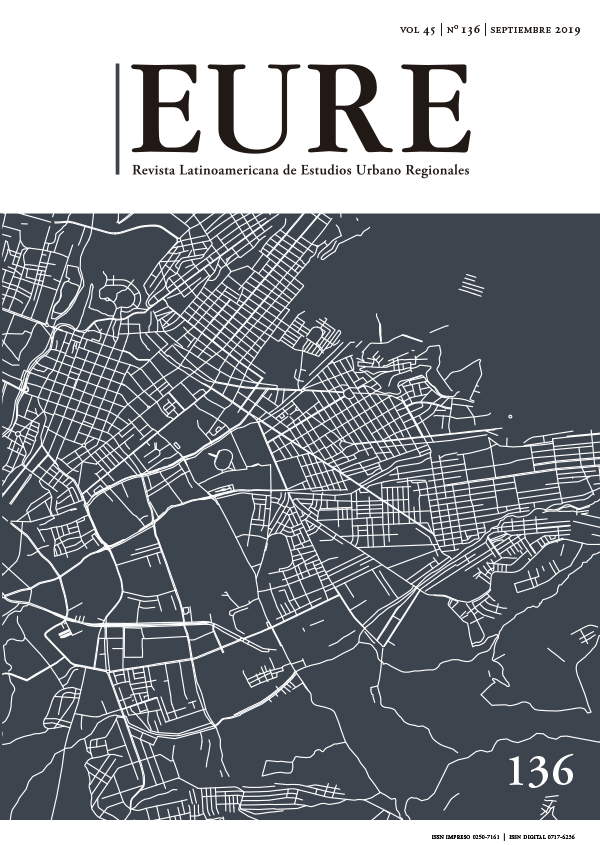Bioclimatic Urbanism in Chile: Proposal of Biozones for Urban and Environmental Planning
DOI:
https://doi.org/10.4067/S0250-71612019000300135Keywords:
urbanism, environment, urban planningAbstract
Bioclimatic urbanism recreates an urban ecosystem vision to channel a type of urbanization that is friendlier with the environment. It recalls how the natural abiotic element such as water, air, ground and energy, operate in a cyclical way. Dysfunction of those cycles by anthropogenic actions has provoked urban pathologies that have been tackled by state action plans and regulations. Given that climate is a key factor in those cycles, a territorial climatic zoning is proposed to give accessible information for urban planners and project practitioners. Information is useful for estimating energy demand and applying climatic resources in urban and environmental planning. The methodology consisted in leveraging databases of meteorological stations along Chile, which were interpolated and geo-referenced through Geographical Information Systems. Results deliver homogeneous territorial units that spatially aggregate meteorological values, which are influential in the bioclimatic urbanism cycles, complementing the current Chilean normative (NCh1079.of2008).Í Bioclimatic urbanism recreates an urban ecosystem vision to channel a type of urbanization that is friendlier with the environment. It recalls how the natural abiotic element such as water, air, ground and energy, operate in a cyclical way. Dysfunction of those cycles by anthropogenic actions has provoked urban pathologies that have been tackled by state action plans and regulations. Given that climate is a key factor in those cycles, a territorial climatic zoning is proposed to give accessible information for urban planners and project practitioners. Information is useful for estimating energy demand and applying climatic resources in urban and environmental planning. The methodology consisted in leveraging databases of meteorological stations along Chile, which were interpolated and geo-referenced through Geographical Information Systems. Results deliver homogeneous territorial units that spatially aggregate meteorological values, which are influential in the bioclimatic urbanism cycles,complementing the current Chilean normative (NCh1079.of2008).Downloads
Published
How to Cite
Issue
Section
License
Copyright (c) 2019 Revista EURE - Revista de Estudios Urbano Regionales

This work is licensed under a Creative Commons Attribution 4.0 International License.
Al momento de aceptar la publicación de sus artículos, los autores deberán formalizar la cesión de derechos de autor a EURE, según las condiciones establecidas por la Revista.
Ésta establece que el autor autoriza a EURE de manera gratuita, exclusiva e ilimitada a reproducir, editar, publicar, distribuir, publicitar, comercializar y traducir el artículo, a cualquier soporte conocido o por conocer y desarrollar.
Del mismo modo, los autores aseguran que el artículo propuesto es original, no publicado y no propuesto para tal fin a otro medio de difusión.


